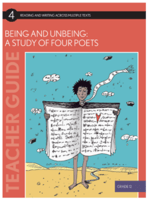Part II of The Independent Reading Series The Classroom Library — If You Build It, They Will Come...
Part 4: The Importance of Series Reading
Part IV of The Independent Reading Series
The Importance of Series Reading
In Part III: The Importance of Student Choice, we discovered the importance of student choice; students need to feel free to choose texts that interest them, no matter how “fluffy” we may think the book is.
Students need regular, daily exposure to texts they can read. The more they read with confidence, the more adept they become. I’ve often heard parents complain that their children are reading “fluffy” series books and that they wish they would read books of substance, or the classics. In actuality, these “fluffy” series books give students the practice they need to become more confident readers.
When I think of all of the series books that have influenced my reading life, I can list quite a few. I fell in love with Little House on the Prairie at an early age. I also devoured a collection of The Hardy Boys mysteries that my mom had when she was a kid. In fifth grade, a set of Louis L’Amour books sat front and center when I walked into the library. They had beautiful soft-bound, fake leather covers. I was in love and read them all! Then, it was on to Nancy Drew and Sweet Valley High. As an adult, a great fantasy novel series is still my go-to when reading for pleasure. I couldn’t read the Wheel of Time series fast enough!
Here are a few current “Best of the Best” lists to share with your students:
- GoodReads – Best YA Series
- Barnes & Noble – Best Teen & YA Book Series
- Reader’s Digest – 25 All-Time Best Book Series for Teens
- BookBub – The Best Book Series for Teens: An Ultimate List

What happens when we read a series book? We fall in love with characters and their conflicts. We become a character in the books—feeling all passions and losses the character feels. The more books we read in the series, the more comfortable we become with the author’s writing style. We know how the author will begin the next chapter. We know the key phrases and actions associated with each character. We know how the author will end a chapter. We just know.
This “knowing” is what supports readers’ fluency when reading series books. When readers move to a new book with a new author, it takes awhile to “get into the flow.” We have to get used to the author’s syntax and vocabulary. We have to get used to the rhythm of language and plot, as well as the setting and time period. However, with a series, we get all of that “knowing” out of the way with the first book. Then, we just read—and the more we read, the faster we get. Avid readers tend to read more quickly because they have practice.
Kyleen Beers discusses the importance of automaticity in Chapter 10 of her book When Kids Can’t Read and What Teachers Can Do. Automaticity is when you can quickly do something without thinking of the nuances of the task. Dependent readers spend a great deal of time working through the nuances of reading: breaking apart a word to figure out how to pronounce it. Once that is done, they have to use context clues and background knowledge to figure out what it means. They may even have to look up the definition or ask a peer what it means.
Students may have to encounter a word multiple times before they can decode it and understand it in context automatically. Series reading can help support students to develop more automaticity. Authors tend to use similar vocabulary across all of their books. Some of these words may be new to students; however, the more they see them in context, the more comfortable they will become with them.
Join us next month for our continued series on independent reading!
.png?width=512&height=129&name=logo-hor%20(7).png)


